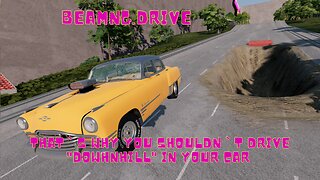How to drive a car
(Intro)
Welcome to today's video on how to drive a car. It's an essential life skill that requires practice, patience, and a lot of focus. In this video, we're going to cover everything you need to know before getting behind the wheel. From starting the car to driving on a highway, we've got you covered. So without further ado, let's get started.
(Section 1: Preparing to Drive)
Before getting behind the wheel, there are a few things you need to prepare. Firstly, you should adjust your seat, mirrors, and steering wheel to ensure that you're comfortable and have a clear view of the road. Secondly, fasten your seatbelt and ensure all passengers have done the same. Thirdly, familiarize yourself with the car's controls such as brake pedal, accelerator, and gear lever. Lastly, check your surroundings before starting the engine.
(Section 2: Starting the Car)
To start the car, insert the key into the ignition and turn it clockwise. Most cars have a safety feature that requires the brake pedal to be depressed before the engine starts. Once the engine has started, release the handbrake and ensure that the car is in neutral gear before engaging the clutch.
(Section 3: Driving in a Straight Line)
Driving in a straight line may seem easy, but it requires precision and focus. To drive in a straight line, ensure that the car is in first gear and gradually release the clutch while simultaneously pressing the accelerator pedal. Keep your hands on the steering wheel and maintain a consistent speed. Use the mirrors to monitor the traffic behind you and change lanes if necessary.
(Section 4: Changing Gears)
Changing gears is an important aspect of driving, and it requires a lot of practice. Before changing gears, ensure that the car is at a safe speed and gradually release the accelerator pedal. Depress the clutch pedal and move the gear lever to the desired gear. Release the clutch pedal slowly while simultaneously pressing the accelerator pedal.
(Section 5: Braking)
Braking is a crucial element of driving, and it requires quick reflexes. To brake, gradually release the accelerator pedal and firmly press the brake pedal. Ensure that you brake smoothly and avoid sudden, jerky movements. To stop the car completely, engage the clutch pedal, shift to neutral gear, and apply the handbrake.
(Section 6: Turning)
Turning is an essential aspect of driving, and it requires a lot of focus and awareness. Before turning, ensure that you signal your intentions and check your mirrors to confirm that it's safe to turn. To turn, release the accelerator pedal and engage the clutch pedal. Turn the steering wheel in the direction you want to go and accelerate gently out of the turn.
(Section 7: Driving on a Highway)
Driving on a highway can be intimidating for new drivers, but it's essential to learn. Before entering the highway, ensure that you signal your intentions and check your mirrors to ensure that it's safe to merge. Maintain a consistent speed and keep a safe following distance from other vehicles. Use the right lane for slow-moving traffic and the left lane for overtaking.
(Section 8: Parking)
Parking is a crucial skill that takes practice and patience. To park, locate a suitable spot and signal your intentions. Slowly maneuver the car into the spot, ensuring that you maintain a safe distance from other vehicles. Once parked, engage the handbrake, shift to neutral gear, and turn off the engine.
(Conclusion)
And there you have it, folks, a comprehensive guide on how to drive a car. Remember, driving is a skill that takes time and effort to master, so don't be too hard on yourself. Practice, practice, and practice some more, and you'll be a confident driver in no time. Thanks for watching, and drive safely.
-
 3:23
3:23
The Matt Mannara Band
3 years agoDriving In My Car
82 -
 0:59
0:59
The time killer channel
10 months agoDriving My Car
8 -
 0:33
0:33
TheRockstarShar80s
1 year agoDrive - The Cars
2 -
 2:39
2:39
Larry8
3 years agoDRIVE by the Cars
11 -
 3:55
3:55
Crystal Expanse Music Videos
11 months agoDrive
5 -
 7:54
7:54
Schrodinger17
5 months agoMy drive
51 -
 1:24
1:24
Opreshsofresh
1 year agoThe Drive
10 -
 3:31
3:31
F11 - Lo Fi Music
1 year agoDrive
3 -
 15:40
15:40
SharkkTownn
5 months agoThat`s Why you shouldn`t drive
6 -
 3:55
3:55
TomBekk
1 year agoJust Drive
6